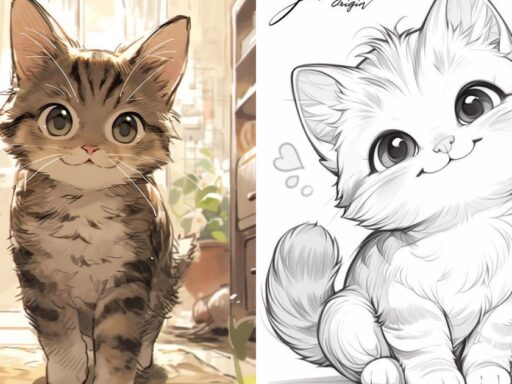Hispanic art is a tapestry of vibrant colors, profound symbols, and rich history that can be explored through the simplicity of drawing. Whether one is an art enthusiast or a novice looking to appreciate or celebrate Hispanic culture, understanding how to create simple representations of this culture can be a fulfilling endeavor. Simple Hispanic drawings serve as a gateway to engaging with a multitude of cultural narratives that transcend borders and time, allowing for a greater appreciation of the diversity and creativity inherent within the Hispanic community.

Engaging with the world of Hispanic art doesn’t require expert skills. With an array of accessible techniques and mediums, anyone can start creating drawings that embody the spirit of Hispanic culture. Focusing on iconic Hispanic symbols and themes offers a straightforward path to learning about and representing Hispanic heritage. Projects like these not only foster artistic growth but also serve educational purposes, providing insights into the values and traditions that are celebrated within Hispanic communities. Artistic exploration in this context is a chance to create and connect with the broader narratives of Hispanic cultural significance on a very personal level.
Key Takeaways
- Simple Hispanic drawings allow individuals to connect with and celebrate Hispanic culture.
- Accessible drawing techniques can convey the rich narratives and symbols of Hispanic heritage.
- Art projects focusing on Hispanic themes offer educational value and foster cultural appreciation.
Understanding Hispanic Culture through Art

Artistic expressions often provide a deeper understanding of cultural identities and histories. Hispanic art showcases a rich tapestry of stories and traditions, reflecting a heritage celebrated during National Hispanic Heritage Month.
Historical Overview
Hispanic cultures have produced a diverse range of art deeply rooted in historical significance. The Aztec Sun Stone, for example, is a renowned symbol within Mexican culture representing the Aztec understanding of the cosmos and their calendar. Traditionally, significant historical events, including periods of independence and the influence of civilizations like the Aztecs and the Taíno, have been depicted through art.


Hispanic Heritage Month in the United States recognizes the contributions of Hispanic Americans to American culture, including the arts. Originally observed as Hispanic Heritage Week, it was expanded to a month in 1988, running from September 15 to October 15.

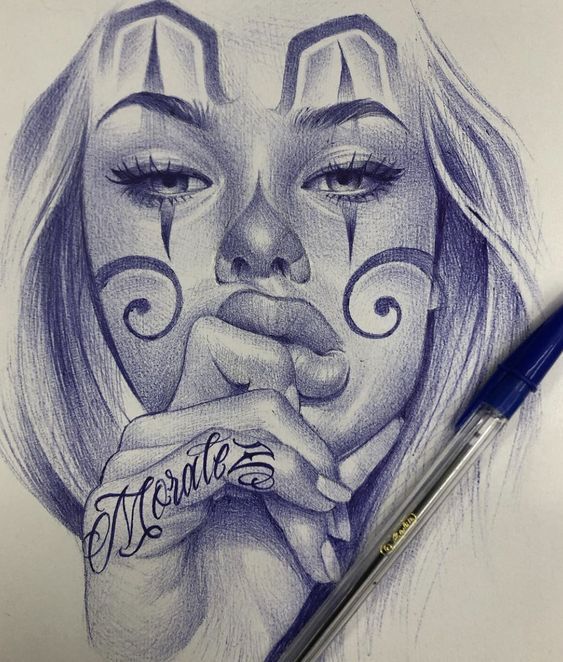
This timeframe coincides with the independence days of several Latin American countries including Guatemala, Mexico, and Puerto Rico, and celebrates the cultures and traditions of those who trace their roots to Spain, Mexico, and the Spanish-speaking nations of Central and South America, and the Caribbean.
Influential Hispanic Artists
Hispanic art has been shaped by numerous influential artists. Frida Kahlo and Diego Rivera are iconic in Mexican art history, both for their unique styles and their political activism. Kahlo’s self-portraits embody bold declarations of her identity and heritage. Rivera’s murals, meanwhile, narrate the struggles and aspirations of the Mexican people.
From the Spanish painters Diego Velázquez and Francisco Goya to modernists like Pablo Picasso and Salvador Dalí, Hispanic artists have made indelible impacts on the global art scene. Their work spans from the Art Institute of Chicago to the galleries of Paris, and they continue to influence artists around the world. Jean-Michel Basquiat, of Puerto Rican and Haitian descent, is an example of how Hispanic heritage has mingled with and contributed to broader art movements, such as Neo-expressionism in the United States.
Iconic Hispanic Symbols & their Representation

Hispanic cultures are rich in symbols that hold significant historical and cultural meaning. From national emblems that evoke national pride to cultural motifs that celebrate life and death, these symbols are integral to Hispanic identity.
National Emblems
Mexican Culture and Flag: Mexico’s national emblem features an eagle perched on a cactus, clutching a snake. This powerful image serves as the country’s coat of arms and central figure on the Mexican flag, embodying national pride and indigenous mythology.


Other National Symbols: Across various Hispanic countries, coat of arms and flags often incorporate symbols such as the eagle and cactus, showcasing the natural flora and fauna indigenous to the region and the courage and strength they represent.
Cultural Motifs
Day of the Dead (Día de los Muertos): This Mexican holiday is represented by the calavera (skull) and sugar skulls, vibrant and whimsical depictions that honor the deceased. The Ojo de Dios (Eye of God), a craft made from yarn woven across wooden sticks, symbolizes the process of life in the face of mortality.
Folklore and Traditions: Lucha libre is associated with colorful masks, representing the battle between good and evil. The muñeca quitapena (worry dolls) are small, handmade dolls entrusted with nighttime worries of the sleepless.


Fiesta: Celebrations are bright and exuberant, symbolized by vivid colors, music, and dance, representing the joy and communal spirit of Hispanic culture.


Artists and enthusiasts seeking to depict Hispanic culture in drawings can focus on these simple yet iconic symbols to impart a rich tapestry of heritage and tradition.
Hispanic Drawing Techniques and Mediums

Hispanic art is characterized by a rich tapestry of techniques and mediums, ranging from time-honored materials to contemporary adaptations. These artistic methods not only honor cultural traditions but also incorporate innovative approaches that resonate with modern audiences.
Traditional Materials
Hispanic artists have traditionally employed a variety of materials to create art. Mexican folk art, for example, often incorporates:
- Clay: Malleable and ubiquitous, used for sculpture and pottery with intricate painted designs.
- Rope: Incorporated into textile arts or used as an outline in certain art pieces.
- Natural pigments: These were typically used for coloring artworks before the advent of synthetic paints.
In these traditional contexts, artists would demonstrate techniques step-by-step, passing down skills through generations. The use of materials like aluminum foil and acrylic paint came later as artists began experimenting with different textures and effects.


Modern Adaptations
Modern Hispanic artists have adapted traditional methods to contemporary practices. They make use of readily available and diverse materials such as:
- Acrylic paint: Favored for its versatility and bright, lasting colors.
- Construction paper: Provides a vibrant and sturdy background for drawings and collages.
- Paper plate: Often used as a canvas in educational settings to teach children about Hispanic art.
In their work, they often piece elements together with glue or create titles indicative of their pieces’ untitled nature, allowing the artwork to speak for itself. These adaptations enable artists to continue expressing their heritage while engaging with a broader audience.
Easy Hispanic Drawing Projects

Hispanic cultures are rich in vibrant traditions and colorful celebrations. Drawing projects inspired by these traditions can be both enjoyable and educational. They not only foster creativity but also provide a hands-on way to explore cultural significance.
Cinco de Mayo Crafts
Cinco de Mayo commemorates the Mexican Army’s victory over the French Empire. To introduce children to this festive holiday, start with simple Cinco de Mayo crafts. They can create paper flowers using red, white, and green tissue paper to reflect the colors of the Mexican flag. The step-by-step process involves cutting layers of tissue paper into petal shapes, gathering them in the center, and fluffing the petals to create voluminous blooms.
Another popular craft is making miniature piñatas. Using cardboard tubes as the base, children can cover them with fringed tissue paper, adding string to hang their creations. These mini piñatas can be filled with small treats and used to decorate or to celebrate the holiday.
Festive Decorations
For festive decorations that are easy to make, consider drawing and assembling simple Mayan kites. These kites often feature bold, geometric designs that can be drawn on paper or lightweight fabric. After coloring their designs with red, white, and green, children can attach their artwork to frames made of thin sticks or straws, adding tails for stability.


Another decoration is a serpent motif, emblematic of the Mayan and Aztec cultures. Kids can sketch a serpent in a coiled position on a sheet of paper, then decorate it with the traditional colors or patterns reflective of historic iconography.
Personal Adornments
Making jewelry is a creative way to understand Hispanic cultures’ symbols and materials. One can create a simple necklace with beads, focusing on color schemes that draw from Hispanic flags or traditional wear. Use a sturdy string or thread to string the beads, and include a central piece that might resemble an Aztec calendar or a Mayan glyph for added cultural relevance.

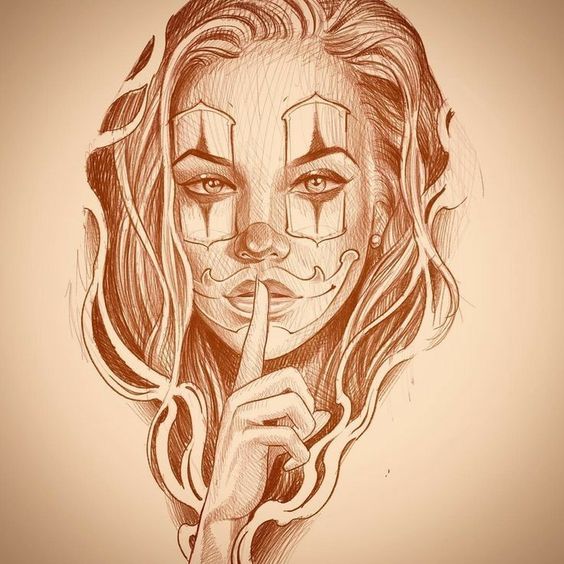
Crafting personal adornments offers a dual opportunity: children learn about the significance of these items in social and ceremonial contexts while creating wearable art that they can show off with pride.


Hispanic Drawing Subjects and Themes

Hispanic art is rich with vibrant subjects and themes that reflect the essence of Hispanic heritage and culture. Through illustrations, artists celebrate traditional aspects of daily life, festivals, and the colorful tapestry of Hispanic identity.
Culinary Delights
Hispanic culture takes great pride in its culinary traditions, which often serve as a central subject in its artwork. Drawings may showcase staple foods such as rice and beans, highlighting not just the dishes themselves but also their cultural significance. For example, an illustration may depict a festive scene with families gathering around a table heaped with these staples, or a more instructional drawing showing how these ingredients are traditionally prepared.
- Foods:
- Rice
- Beans
Musical Elements
Music is a cornerstone of Hispanic heritage, often depicted through drawings of musical instruments and celebratory scenes. Artwork may include instruments like the guitar or maracas, commonly associated with Mexican culture. Drawings might also capture the energy of a fiesta, where instruments are played during cultural celebrations such as the Day of the Dead. Each illustration tells a story of how music weaves through the fabric of Hispanic daily life, festivities, and rituals.
Instruments:
- Guitar
- Maracas
Festivities:
- Day of the Dead
Educational Activities and Resources


The following resources and activities are specifically designed to celebrate Hispanic heritage through art, providing a rich understanding of cultural significance and an engaging way to explore self-expression.
Interactive Learning


Interactive learning activities centered on Hispanic drawings provide an excellent opportunity for students to immerse themselves in the cultural heritage of countries such as Costa Rica, Puerto Rico, and Guatemala during National Hispanic Heritage Month.


Educational websites offer step-by-step guides and interactive modules that highlight influential Hispanic artists like Frida Kahlo and Diego Rivera.
- Module 1: Celebrating Hispanic Heritage
- Introduction to National Hispanic Heritage Month
- Cultural significance of art from various Hispanic regions: Costa Rica, Puerto Rico, Guatemala
- Module 2: Influential Artists and Their Work
- Exploration of Frida Kahlo’s and Diego Rivera’s impact on art
- Analysis of specific works and their historical contexts
Self Portrait Exploration


Exploring self-portraits is a profound way to connect with the work of Frida Kahlo, one of Mexico’s most renowned artists known for her captivating self-portraits. Educators can encourage students to create their self-portraits by following:
- Identifying Emotion: Analyze Kahlo’s self-portraits to understand the emotions conveyed.
- Conveying Cultural Identity: Task students with incorporating elements that reflect their personal or cultural identity, drawing inspiration from Kahlo’s style.
- Tools and Techniques: Provide instructions on using various drawing mediums, such as pencils, charcoal, or pastels.
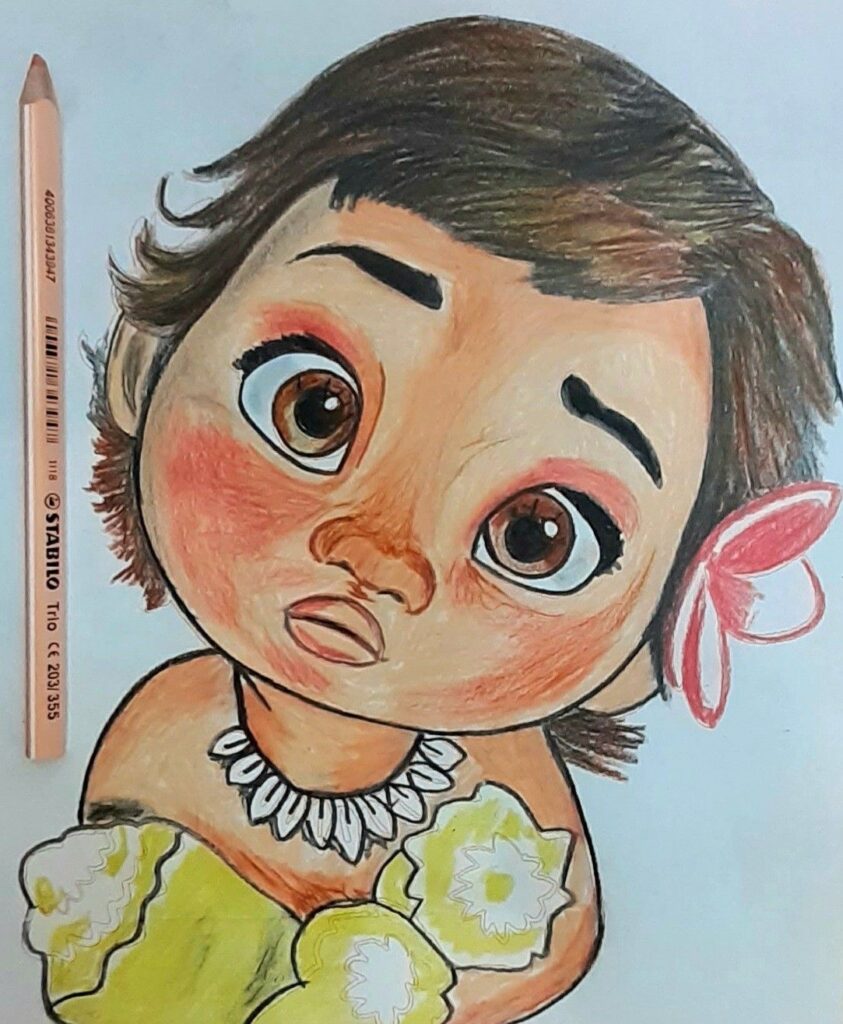

Note: When conducting these activities, ensure they are age-appropriate and that materials are safely handled by participants.
Conclusion

Hispanic drawings have long been integral to expressing cultural identity and national pride. They provide viewers with a tangible connection to the rich tapestry that is Hispanic heritage. Artists often depict thematic elements such as traditional festivals, everyday life, and historical tales, which emphasize the cultural significance of these works.
| Cultural Aspect | Representation in Art |
|---|---|
| Festivals | Use of vibrant colors |
| Daily Life | Depiction of communal gatherings |
| History | Illustrations of historical events |
Hispanic art is not just an aesthetic experience but a vivid storytelling medium. It informs and educates about their diverse traditions, rituals, and societal values. Through simple yet profound strokes, Hispanic drawings communicate complex emotions and messages that resonate with many, cultivating a sense of pride and continuity.


Facilitating an understanding of Hispanic culture, these drawings can act as bridges between generations, preserving the past while remaining relevant in contemporary society. Observers should appreciate the subtleties in each work, which are oftentimes tributes to the unyielding spirit and vibrant life inherent in Hispanic communities.
In conclusion, the simplicity found in certain Hispanic drawings belies their profound impact. They continue to inspire and foster an appreciation for a culture steeped in history, artistry, and pride.
Frequently Asked Questions

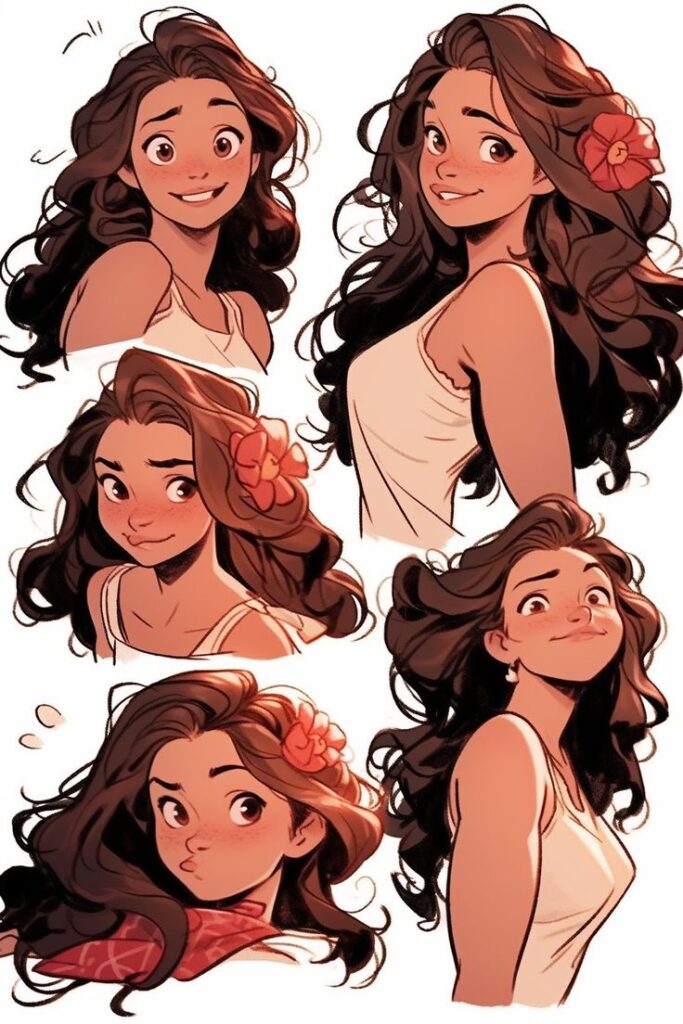
This section aims to address common inquiries about starting Hispanic art, easy crafts for children, sources of inspiration, characteristics of pre-Hispanic art, celebration activities during Hispanic Heritage Month, and the cultural significance of Hispanic art.
How can beginners start learning to draw Hispanic-themed art?
Beginners interested in Hispanic-themed art can start by practicing simple subjects like folk art symbols, colorful patterns, and local flora and fauna. Drawing tutorials and art classes focusing on Hispanic culture can also be beneficial.
What are some simple Hispanic crafts suitable for children?
Simple crafts for children can include creating papel picado, which is a traditional Mexican paper craft, and making masks or piñatas. These crafts introduce children to Hispanic culture through engaging, hands-on activities.
Who are some prominent Hispanic artists to study for inspiration?
Key figures such as Frida Kahlo, Pablo Picasso, and Diego Rivera provide a rich source of inspiration for their diverse styles and contributions to Hispanic art. Studying their works can enhance one’s understanding of color, form, and cultural themes.
What are the typical characteristics of pre-Hispanic art?
Pre-Hispanic art is often characterized by geometric shapes, intricate patterns, and representations of gods and daily life. Pottery, textiles, and stone carvings from cultures like the Maya, Aztec, and Inca are excellent examples of this art form.
During Hispanic Heritage Month, what are some easy crafts to celebrate the occasion?
During Hispanic Heritage Month, individuals can engage in making crafts such as simple mosaics inspired by Spanish tiles or decorating folk guitars out of cardboard. These activities celebrate the vibrant heritage and contribute to understanding Hispanic culture.
Why does Hispanic art hold significant cultural importance?
Hispanic art is significant as it embodies the diverse histories, identities, and experiences of Hispanic communities. It often reflects social and political themes and is a vital tool for preserving cultural heritage and traditions.
- 6.1Kshares
- Facebook0
- Pinterest6.1K
- Twitter0


